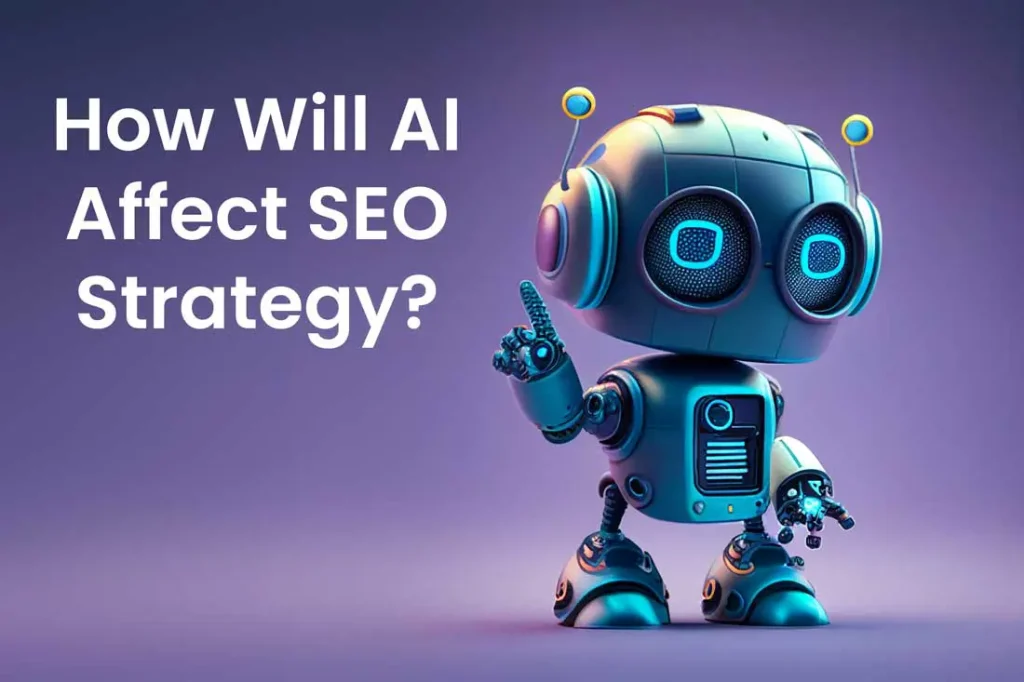How AI Overviews Are Reshaping SEO Strategies in 2025
The digital marketing world in 2025 is a dynamic, AI-powered frontier, and one of the most transformative developments is the rise of AI overviews. These intelligent summaries, generated by search engines, are changing how users interact with search results and, in turn, how SEO professionals approach their craft. As AI overviews become more prevalent, they’re not just a feature to adapt to—they’re a catalyst for reimagining SEO strategies entirely. In this comprehensive guide, we’ll dive into what AI overviews are, their impact on traditional SEO, and how you can optimize your strategy to thrive in this evolving landscape.
What Are AI Overviews?
AI overviews are concise, algorithm-driven summaries displayed prominently at the top of search engine results pages (SERPs). Leveraging cutting-edge machine learning, natural language processing (NLP), and vast data sets, these overviews provide users with immediate answers to their queries without requiring them to click through to a website. Think of them as an evolution of featured snippets, but smarter and more dynamic. Introduced and refined by major players like Google, AI overviews aim to enhance user experience by delivering quick, accurate, and often personalized responses.
In 2025, AI overviews have reached new heights of sophistication. They’re no longer limited to text-based summaries; many now include real-time data, interactive elements like charts, and even multimedia such as images or short video clips. For example, a search for “what’s the weather like in New York today?” might yield an AI overview with a live forecast, a temperature graph, and a brief video explaining atmospheric conditions—all without leaving the SERP. For SEO professionals, this shift means rethinking how visibility is achieved when traditional click-throughs are no longer guaranteed.

The Impact of AI Overviews on Traditional SEO
The rise of AI overviews is shaking up the foundations of SEO, challenging long-held assumptions and forcing marketers to adapt. Here’s a detailed look at how they’re reshaping the field:
- Reduced Click-Through Rates (CTR) and the Zero-Click Search Era
Historically, SEO success was measured by organic traffic—getting users to click through to your site. AI overviews disrupt this model by answering queries directly on the SERP. Known as “zero-click searches,” these interactions mean users get what they need without visiting a website. For instance, searching “how to tie a tie” might return a step-by-step AI overview with illustrations, reducing the need to click a blog post or video tutorial. While this improves user experience, it poses a challenge for businesses reliant on website visits for conversions or ad revenue. - A Shift in Keyword Strategy Toward Intent and Questions
AI overviews thrive on understanding user intent, particularly for conversational or question-based queries. In 2025, broad keywords like “SEO tips” are losing ground to long-tail, specific phrases like “how do AI overviews affect SEO in 2025” or “what’s the best way to rank with AI search.” This shift reflects how users increasingly phrase searches as full questions, especially with the rise of voice assistants like Alexa or Google Assistant. SEO strategies must now prioritize content that aligns with these natural language patterns. - Content Authority and Quality Take Center Stage
To be featured in an AI overview, content must stand out as authoritative, reliable, and well-researched. Search engines are doubling down on quality signals, favoring pages with original insights, expert authorship, and credible citations over generic, keyword-stuffed articles. For example, a blog post claiming “AI is the future of SEO” won’t cut it unless it’s backed by data, case studies, or expert opinions that AI algorithms can trust and summarize. - The Growing Importance of Structured Data and Schema Markup
AI overviews rely on machine-readable data to interpret and present content accurately. Structured data, implemented through schema markup, helps search engines understand the context of your page—whether it’s a recipe, a product review, or a how-to guide. In 2025, websites using schemas like FAQ, Article, or How-To are significantly more likely to appear in AI overviews. This technical edge is becoming a must-have for staying competitive. - Real-Time Relevance and Freshness
Unlike static web pages, AI overviews can pull the latest information from across the web or even live data feeds. This means outdated content risks being overlooked, no matter how well-optimized it once was. For instance, a 2023 guide to “SEO best practices” won’t hold up against a freshly updated 2025 version when AI is curating the overview. Staying current is now a critical factor in SEO success.
How to Adapt Your SEO Strategy for AI Overviews in 2025
Adapting to AI overviews doesn’t mean abandoning traditional SEO—it means enhancing it with new tactics tailored to this AI-driven reality. Below are five detailed, actionable strategies to optimize your approach and secure visibility in 2025:
- Target Featured Snippet Opportunities with Precision
2AI overviews often build on the framework of featured snippets, those concise answers that appear at the top of SERPs. To position your content for inclusion, focus on creating snippet-worthy sections that directly address common questions. Use clear, scannable formats like numbered lists, bullet points, or tables. For example, a post titled “The Ultimate Guide to AI SEO in 2025” could include a section like “What Are the Top 5 AI SEO Tools?” formatted as a list with brief, data-backed descriptions. Aim to be the definitive answer AI algorithms can’t ignore. - Leverage Conversational Content for Voice and AI Search
With AI overviews catering to natural language queries, your content should reflect how people actually speak. Voice search is a major driver here—users ask devices, “How do I optimize my site for AI overviews?” rather than typing “AI overview optimization.” Incorporate question-based headings and conversational phrasing throughout your content. For instance, a section titled “Why Should You Care About AI Overviews?” could naturally lead into an explanation tailored to user curiosity, boosting its chances of being picked up. - Enhance Content with Structured Data for Machine Readability
Structured data is your secret weapon for making content AI-friendly. By adding schema markup, you give search engines a roadmap to your page’s key information. Consider a blog post about “AI Trends in 2025.” Adding FAQ schema for questions like “What are AI overviews?” or “How do they impact SEO?” can signal to AI algorithms that your content is ready to be summarized. Tools like Google’s Structured Data Markup Helper can simplify this process, ensuring your site stands out in a crowded digital landscape. - Prioritize E-E-A-T to Build Trust and Authority
Google’s E-E-A-T framework—experience, expertise, authoritativeness, and trustworthiness—is more critical than ever in 2025. AI overviews favor content from credible sources, so bolster your pages with signals of legitimacy. Include author bios with credentials (e.g., “Jane Doe, 10-year SEO veteran”), link to reputable studies or statistics, and avoid fluff. For example, a post about AI overviews could cite xAI’s latest research or a 2025 industry report to reinforce its authority, making it a prime candidate for AI summarization. - Monitor and Adapt to Real-Time Trends with Agility
AI overviews thrive on freshness, pulling from the most relevant and up-to-date sources. To stay in the game, use tools like Google Trends, BuzzSumo, or even X posts to track emerging topics in your niche. Suppose “AI-powered content creation” spikes in popularity in March 2025—quickly updating your blog with a section on this trend could land you in an AI overview. Regular audits of your content to refresh statistics, examples, and insights will keep you competitive.
Case Studies: Winning with AI Overviews
To illustrate these strategies, let’s explore two hypothetical examples:
- Tech Blog Success: A tech site publishes “The Best AI Tools for SEO in 2025,” optimized with FAQ schema, a conversational tone, and expert quotes from industry leaders. Within weeks, it’s featured in an AI overview for “What are the top AI SEO tools?” driving brand awareness even with fewer clicks.
- E-Commerce Pivot: An online retailer updates its product pages with a How-To schema for queries like “How to choose the best AI software.” The structured data lands in an AI overview, boosting visibility and indirectly increasing sales through enhanced trust.
The Future of SEO in an AI-Driven World
Looking ahead, AI overviews signal a broader shift in SEO’s purpose. It’s no longer just about driving traffic—it’s about owning the conversation on the SERP itself. While zero-click searches may reduce direct visits, they amplify brand exposure and authority for those who adapt. Businesses that treat AI overviews as an opportunity rather than a threat will find new ways to connect with audiences, whether through enhanced trust, thought leadership, or innovative content formats.
In 2025, SEO success hinges on agility, quality, and technical precision. The brands that master this balance will not only survive the AI revolution—they’ll shape it.
Conclusion
AI overviews are rewriting the rules of SEO in 2025, pushing marketers to prioritize intent, authority, and machine-readable content. By targeting snippet opportunities, embracing conversational language, leveraging structured data, reinforcing E-E-A-T, and staying current, you can turn this shift into a competitive advantage. Start refining your strategy now, and position your content to shine in the era of AI-driven search.






